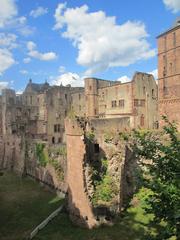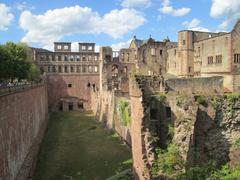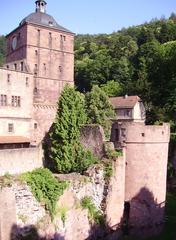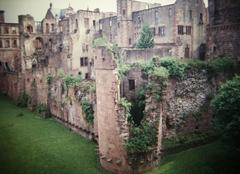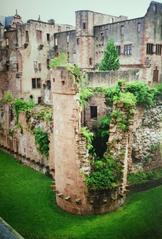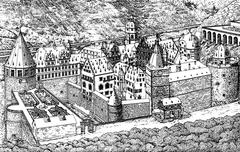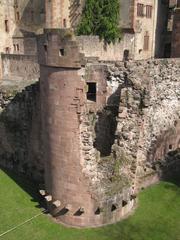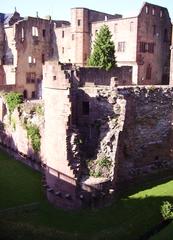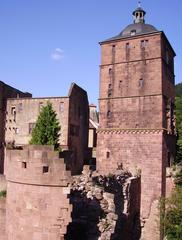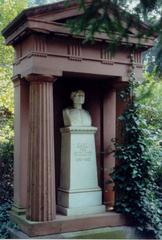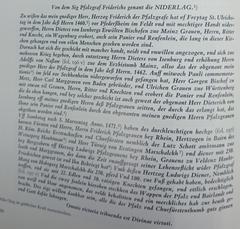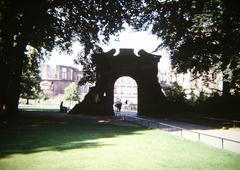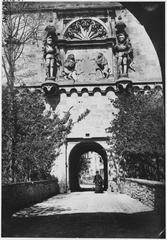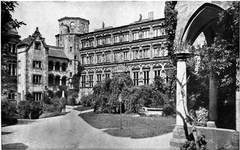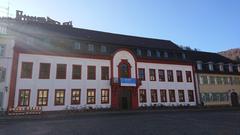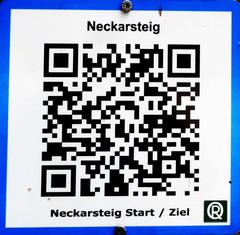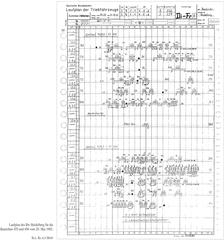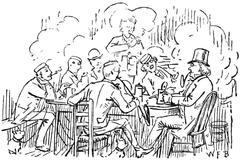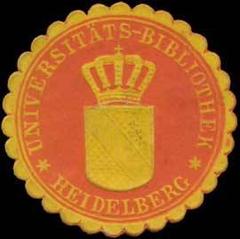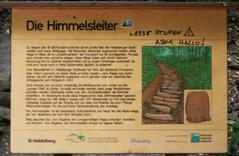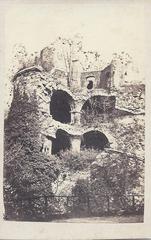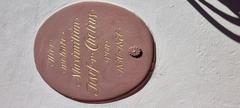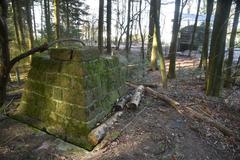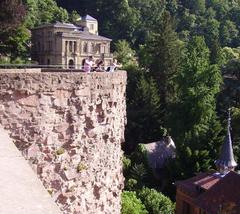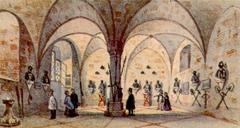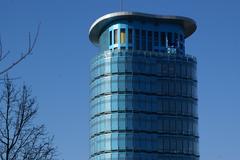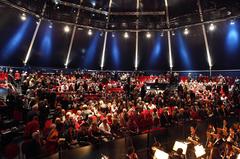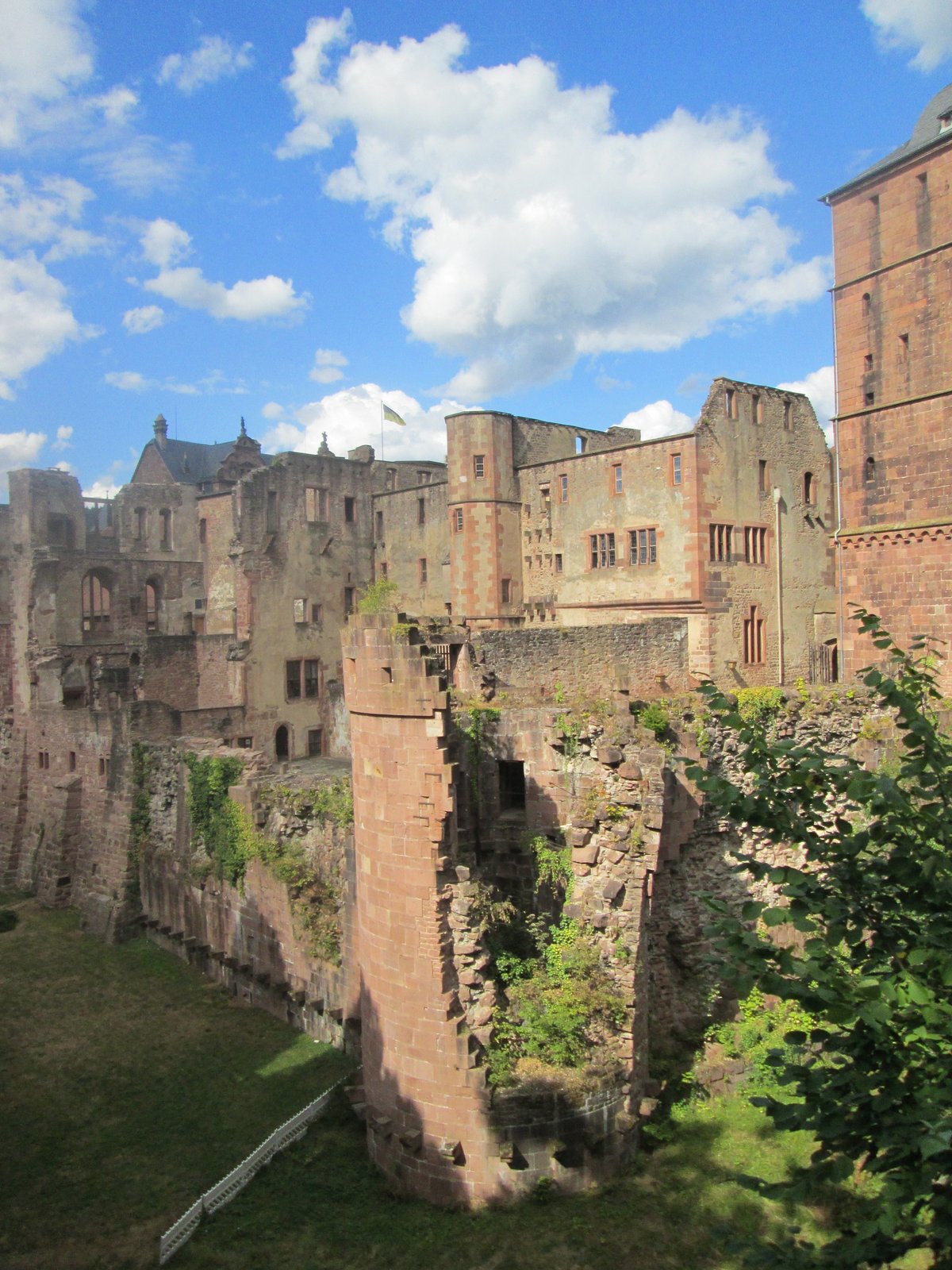
Seltenleer Heidelberg Visiting Hours, Tickets, and Historical Sites Guide
Date: 14/06/2025
Introduction: Seltenleer and Heidelberg’s Living Heritage
Nestled in the heart of Germany’s scenic Rhine-Neckar region, Seltenleer in Heidelberg embodies a remarkable interplay of historical grandeur and modern cultural innovation. This guide will help you navigate Seltenleer’s multifaceted identity—as a significant wing of the iconic Heidelberg Castle and as a vibrant cultural venue in the sustainable Bahnstadt district. Whether you are drawn by Renaissance architecture, contemporary art, or sustainable urban living, Seltenleer and its surroundings promise an immersive exploration of Heidelberg’s rich past and dynamic present.
Heidelberg’s historical significance stretches back half a million years, marked by the discovery of Homo heidelbergensis fossils and a continuous evolution from Celtic and Roman settlements to its medieval heyday. The city gained scholarly prominence with Germany’s oldest university, founded in 1386, and it continues to captivate millions each year with its romantic Old Town, storied castle, and thriving cultural calendar. Today, Heidelberg stands as a model for balancing heritage preservation, sustainable innovation, and creative vitality (Heidelberg Marketing, Heidelberg City History).
This guide delivers in-depth information on Seltenleer’s history, cultural importance, visiting hours, ticketing, accessibility, travel tips, nearby attractions, and recommendations—equipping you for a rewarding journey through one of Germany’s most storied cities (planetware.com, Heidelberg Tourism Guidelines).
Contents
- Introduction
- History and Location of Seltenleer
- Geographic Setting and Access
- Urban Development and Context
- Heidelberg’s Historical and Cultural Significance
- Prehistoric Roots and Ancient Settlements
- Rise as a Cultural Center
- Architectural Heritage and Preservation
- Visiting Seltenleer at Heidelberg Castle
- Historical Overview
- Directions and Transportation
- Visiting Hours & Ticketing
- Navigating the Castle and Facilities
- Guided Tours & Special Experiences
- Accessibility, Tips, and Best Visiting Times
- Nearby Attractions & Dining
- Seltenleer in the Bahnstadt District
- Modern Cultural Venue & Community Hub
- Sustainability & Urban Innovation
- Visitor Info: Hours, Tickets, Access
- Events, Accessibility & Local Customs
- Major Festivals & Annual Events
- Accessibility in Heidelberg
- Local Etiquette & Tourist FAQs
- Recommendations & Practical Tips
- Call to Action
History and Location of Seltenleer
Geographic Setting and Accessibility
Seltenleer is situated in two key Heidelberg locations:
- Heidelberg Castle: As a distinguished wing of the castle complex, perched above the Altstadt, Seltenleer provides sweeping views and a direct connection to centuries of architectural history.
- Bahnstadt District: As a contemporary cultural venue, Seltenleer is located in the innovative Bahnstadt quarter, recognized as the world’s largest passive house settlement and a showcase of sustainable urban design (Heidelberg City History).
Getting There:
- Castle: Reachable via funicular railway (Bergbahn) from Kornmarkt or by a scenic walk. Parking is available at nearby garages, and frequent transit connects the central train station to the Altstadt.
- Bahnstadt: Easily accessed by tram lines 22 and 26 (“Bahnstadt” stop), a 15-minute walk or short bike ride from Heidelberg Hauptbahnhof. The area is pedestrian- and bike-friendly, with modern amenities and green spaces.
Urban Development and Historical Context
Bahnstadt’s transformation from a former freight rail yard into a sustainable, mixed-use district is emblematic of Heidelberg’s forward-looking approach. The area now hosts thousands of residents, businesses, and Seltenleer’s dynamic cultural space, fostering community, creativity, and environmental responsibility (Heidelberg City History).
Heidelberg’s Historical and Cultural Significance
Prehistoric Roots and Ancient Settlements
Heidelberg’s region is an archaeological treasure, highlighted by the discovery of the “Homo heidelbergensis” jawbone near Mauer—one of Europe’s oldest early human fossils, dating back 500,000 years. Celtic tribes established fortified settlements on the Heiligenberg, later succeeded by Romans who built forts, bridges, and a civilian vicus in present-day Neuenheim. The city’s name, “Heidelberg,” first appeared in the 12th century, reflecting its ancient and evolving landscape (Heidelberg Marketing).
Rise as a Cultural Center
Heidelberg University, founded in 1386, is Germany’s oldest and remains a beacon for academic excellence. The city’s Baroque Old Town emerged from the ashes of the Nine Years’ War, while the romantic ruins of Heidelberg Castle became a symbol of German Romanticism. Today, Heidelberg is honored as a UNESCO City of Literature and is renowned for its thriving literary, musical, and performing arts scenes (TravelSetu).
Architectural Heritage and Preservation
Heidelberg Castle, dating to the 13th century, reflects cycles of war, destruction, and restoration. Its Renaissance and Baroque facades, as well as features like the Great Barrel and Seltenleer wing, are key highlights. The city’s commitment to adaptive reuse is seen in renovated concert halls, university buildings, and the preservation of Jewish and multicultural heritage (Best Places to Visit Germany).
Visiting Seltenleer at Heidelberg Castle
Historical Overview
Seltenleer, constructed in the 16th century, was integral to the castle’s administrative and residential life under the Prince Electors. Its ornate architecture and hillside setting offer visitors tangible links to the region’s political and cultural evolution.
Directions and Transportation
- Funicular Railway: From Kornmarkt in the Altstadt directly to the castle entrance; recommended for accessibility and convenience.
- Walking: A 600-meter uphill walk from parking or the Old Town.
- By Car: Use “Am Karlsplatz” parking; castle is a short walk away.
- Public Transit: Trams and buses from Heidelberg Hauptbahnhof to Altstadt (burgenarchiv.de, heidelberg.de).
Visiting Hours & Ticketing
- Opening Hours: April–October, 9:00 am–6:00 pm; November–March, 10:00 am–5:00 pm. Last entry 30–60 minutes prior to closing (heidelberg.de).
- Tickets: Purchase online or at the entrance. Standard tickets include castle courtyard, German Pharmacy Museum, and Great Barrel. Guided tours (required for Seltenleer interiors) are available in multiple languages for an additional fee. Combination tickets often include funicular fare (planetware.com).
- Discounts: For students, children, groups; under six free. Check official event calendar for updates.
Navigating the Complex & Facilities
- Wayfinding: Clear signage (German/English), maps, and knowledgeable staff.
- Amenities: Modern restrooms, cafés with panoramic views, gift shops selling books and “Heidelberger Studentenkuss” chocolates (studentenkuss.com), and free WiFi via “Heidelberg4you” (heidelberg.de).
- Accessibility: Funicular is wheelchair accessible. Some historic areas have uneven ground; staff offer assistance and alternative routes.
Guided Tours & Special Experiences
- Guided Tours: 45–60 minutes, covering Seltenleer and main highlights. Specialized tours explore themes like architecture and the Thirty Years’ War.
- Audio Guides: Available for self-paced exploration.
- Family Programs: Interactive tours and events during holidays (planetware.com).
Best Visiting Times
- Spring/Early Autumn: Mild weather, fewer crowds, gardens in bloom.
- Summer: Longer hours, cultural events, busier atmosphere.
- Winter: Quieter visits, Christmas markets, castle illuminations (travellingking.com, germanyfootsteps.com).
Nearby Attractions & Dining
- Philosophenweg: Scenic hill walk.
- Old Bridge (Alte Brücke): Historic bridge and monkey statue.
- University and Student Jail: Insight into student traditions.
- Neckarwiese Park: Riverside relaxation (journey-fun.com).
- Dining: Traditional taverns, castle café, Old Town restaurants (traveltastefeel.com).
Seltenleer in the Bahnstadt District: A Modern Cultural Venue
Cultural Significance and Programming
Seltenleer in Bahnstadt exemplifies Heidelberg’s embrace of sustainability and creative innovation. The venue hosts exhibitions, performances, workshops, and community events centered on urban life, social innovation, and contemporary art (Heidelberg Tourism Guidelines). Programs draw a diverse audience—locals, students, and international visitors—contributing to the district’s lively spirit.
Visitor Information
- Visiting Hours: Most events run 14:00–22:00; schedules vary by event. Check official website/social media for updates.
- Tickets: Many exhibitions and community activities are free or low-cost; ticketed events can be booked online or at the venue.
- Access: Fully accessible entrances, restrooms, and signage; located close to tram stops and bike routes.
- Nearby Amenities: Cafés, restaurants, and green spaces within Bahnstadt, plus occasional guided tours of passive house architecture.
Events, Accessibility, and Local Customs
Major Festivals & Annual Events
- Heidelberg Castle Festival (Schlossfestspiele)
- Heidelberger Frühling Liedfestival
- Castle Illuminations & Fireworks
- Literature, Drama, and Queer Festivals
- HeidelbergMan Triathlon & Wheelchair Marathon
For full event listings and ticketing, visit the official events calendar.
Accessibility and Transport
- Getting Around: Efficient public transit, pedestrian-friendly Old Town, bike rentals, and accessible routes.
- Visitor Services: Tourist information centers, free WiFi, and the HeidelbergCARD offering discounts and free transit.
- Accessibility: Many sites (including the castle and Seltenleer in Bahnstadt) are wheelchair accessible; check event and venue-specific info for details.
Local Customs & Etiquette
- Formal greetings and punctuality are valued.
- Quiet hours observed at night and on Sundays.
- Tipping is customary but not obligatory.
- Most shops close on Sundays; carry cash for small purchases.
- Environmental stewardship and recycling are highly encouraged.
Recommendations & Practical Tips
- Plan Ahead: Consult online calendars and book tickets to avoid queues.
- Combine Experiences: Pair your visit to Seltenleer with walks along Philosophenweg or dining in the Old Town.
- Use Sustainable Transport: Favor public transit or cycling, especially in Bahnstadt.
- Download the Audiala App: For up-to-date events, guided tours, and city insights.
Frequently Asked Questions (FAQ)
Q: What are Heidelberg Castle’s visiting hours?
A: April–October, 9:00 am–6:00 pm; November–March, 10:00 am–5:00 pm.
Q: How do I buy tickets for Heidelberg Castle or Seltenleer events?
A: Online or at the venue entrance. Some events are free; guided tours require an additional ticket.
Q: Is Seltenleer accessible for people with disabilities?
A: Yes, both Bahnstadt and the castle funicular are accessible. Some castle areas are historic and may limit access.
Q: What’s the best time to visit Seltenleer and the castle?
A: Spring and early autumn offer pleasant weather and manageable crowds.
Visuals
Summary & Visitor Recommendations
Seltenleer in Heidelberg offers a compelling synthesis of heritage and innovation—inviting visitors to experience Renaissance splendor at the castle, cutting-edge culture in Bahnstadt, and the city’s renowned festivals and traditions. With practical visitor information, accessible facilities, and a vibrant urban atmosphere, Seltenleer is an ideal gateway to Heidelberg’s enduring legacy and creative future.
To make the most of your visit:
- Check official resources for current hours and events
- Use sustainable transit options
- Explore both historical and modern facets of the city
- Leverage digital guides like Audiala for real-time updates
Embark on your journey to Seltenleer and discover the unique blend of Heidelberg’s historical depth, cultural vibrancy, and sustainable urban spirit.
Sources and Official Links
- Heidelberg Marketing
- Heidelberg City History
- planetware.com
- Heidelberg Tourism Guidelines
- burgenarchiv.de
- traveltastefeel.com
- travelingseason.com
- journey-fun.com
